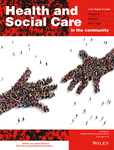Trends in health screening participation and lifestyle behaviours after participation in a free, access-enhanced screening intervention in a low-income Singaporean rental-flat community
Funding information
The Saw Swee Hock School of Public Health and Yong Loo Lin School of Medicine, National University of Singapore, provided funding support for the purchasing of medical consumables. This research was also supported by a Junior Pitch for Funds Grant awarded to WLE by the Division of Medicine, Singapore General Hospital.
Abstract
Our objective was to evaluate the impact of an access-enhanced health screening intervention on screening adherence in a rental-flat community. In Singapore, public rental flats provide heavily subsidised rentals for the needy who cannot afford to own their own homes; with a majority of Singaporeans (≥85%) staying in owner-occupied public housing. We observed trends in health screening adherence and health behaviours among residents of a multi-ethnic public rental-flat community in Singapore from 2013 to 2017, after participation in a free, access-enhanced multi-modality screening programme in 2011. Residents staying in neighbouring owner-occupied housing who participated in the same screening programme served as a basis of comparison. A total of 478 rental-flat residents and 505 owner-occupied flat residents participated. In the rental-flat community, hypertension screening rates improved from 18.3% (24/131) in 2013, to 61.2% (52/85) in 2015 and 44.2% (34/77) in 2017 (p < .001). For diabetes, rates improved from 26.2% (43/164) → 47.0% (54/115) → 49.5% (45/91; p < .001). For dyslipidaemia screening, rates improved from 18.2% (31/170) → 39.6% (38/96) → 47.5% (38/80; p < .001). In the owner-occupied community (n = 505), screening rates largely remained stagnant (hypertension: 52.2% → 75.0% → 54.5%, p = .059; diabetes: 66.0% → 56.5% → 66.7%, p = .434; dyslipidaemia: 53.1% → 50.0% → 57.1%, p = .818). In the rental-flat community, unhealthy behaviours increased from 2013 to 2017, with higher proportions of overweight (30.4% → 24.8% → 52.1%, p < .001), higher smoking (11.7% → 36.9% → 32.5%, p < .001) and higher drinking rates (1.4% → 0.7% → 8.1%, p < .001). This shift was also reflected in the owner-occupied community, with higher percentages of overweight and higher drinking rates (p < .001).
CONFLICT OF INTEREST
The authors declare that they have no competing interests.
Open Research
DATA AVAILABILITY STATEMENT
The datasets used and/or analysed during this study are available from the corresponding author on reasonable request.




